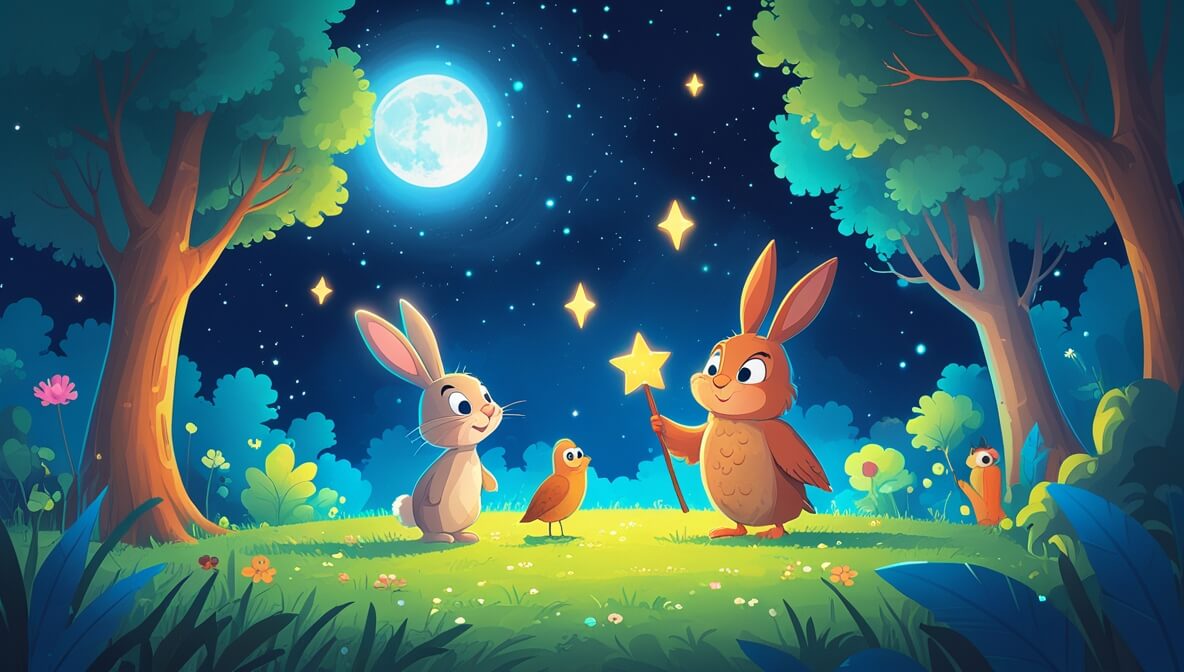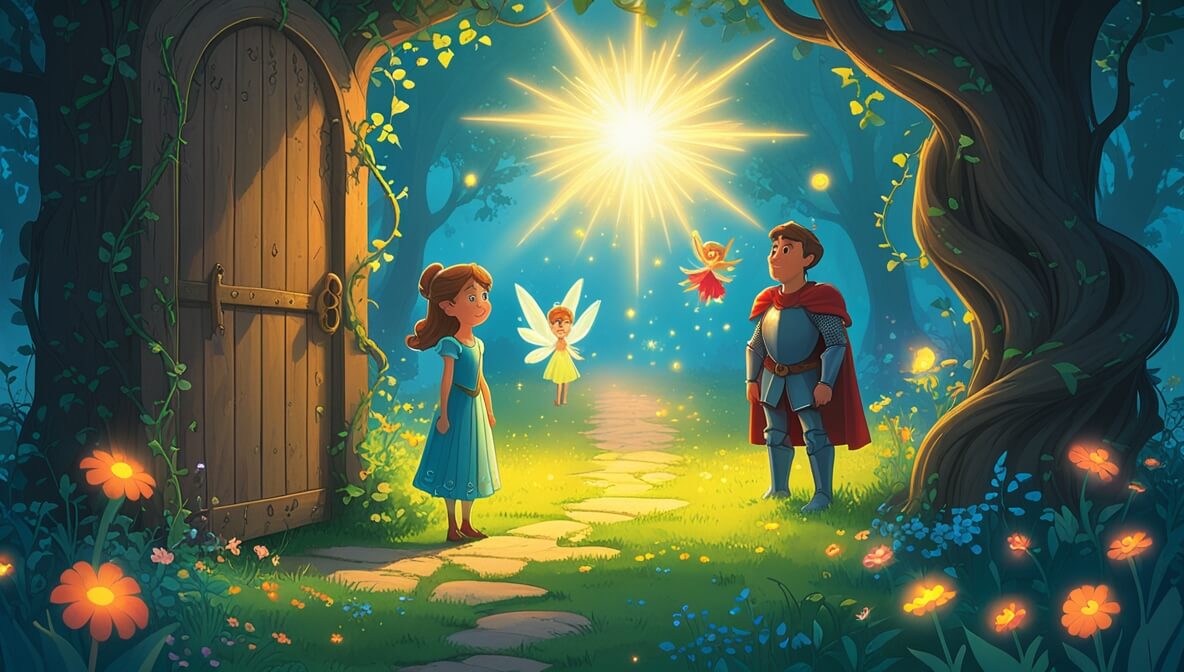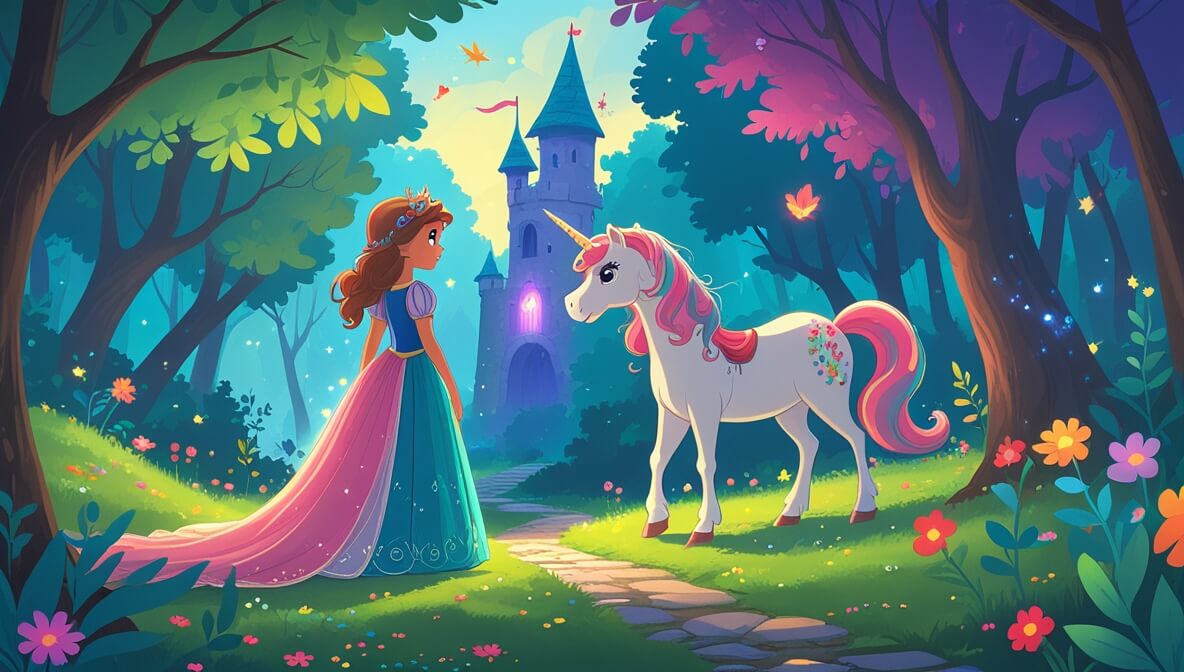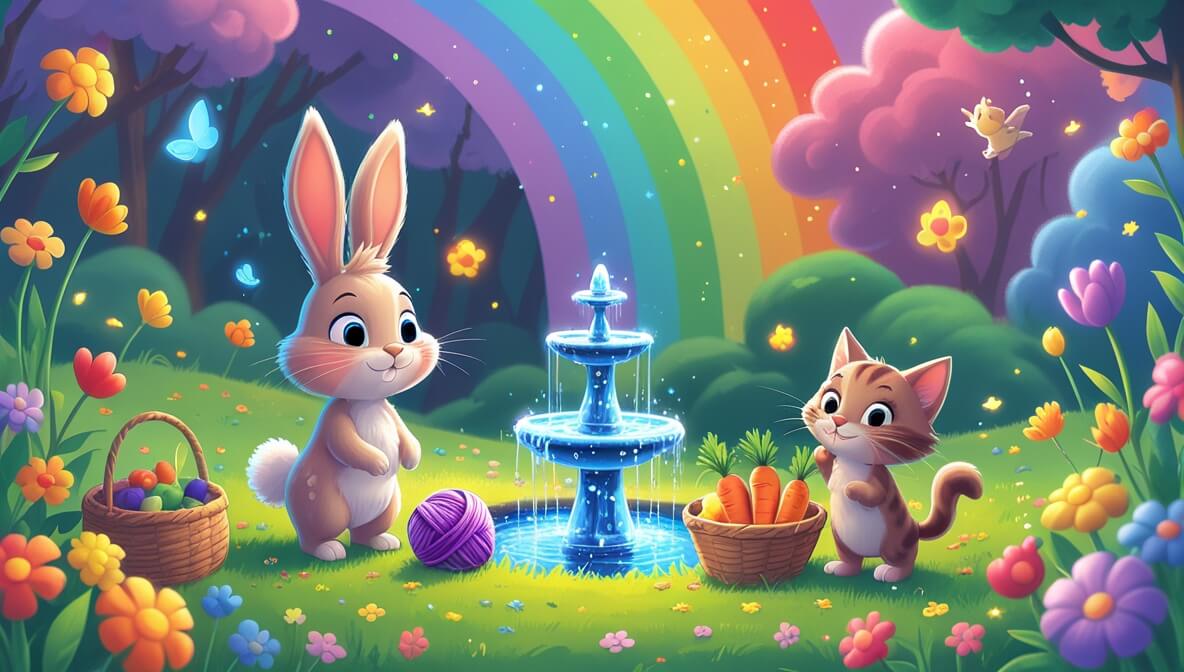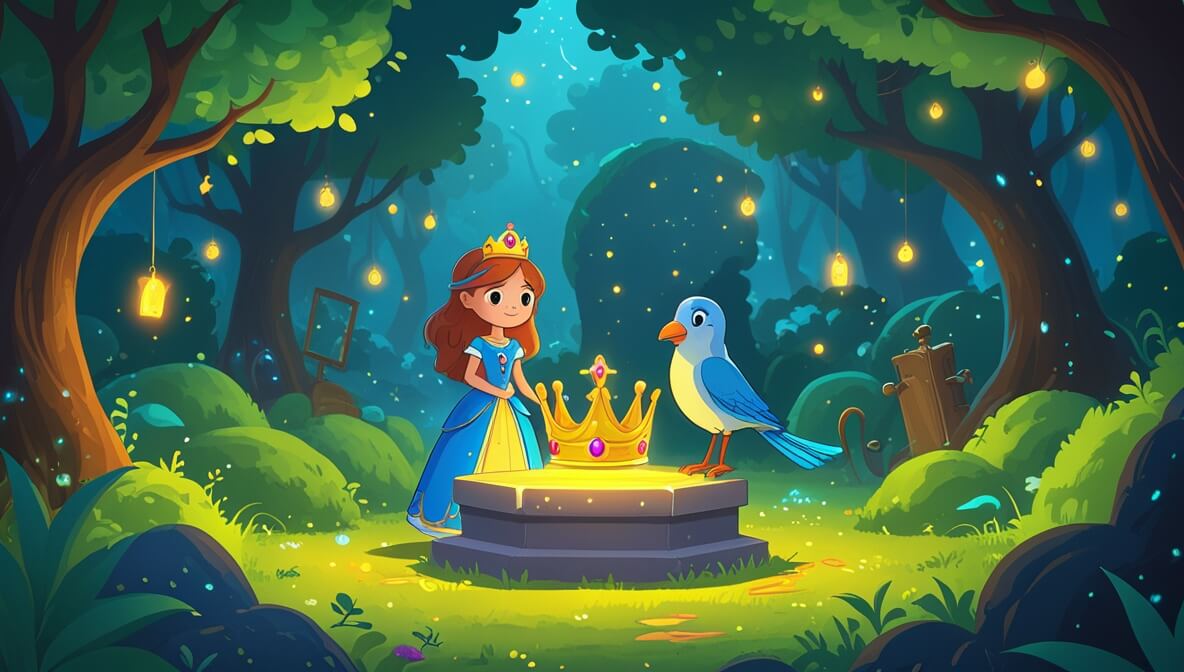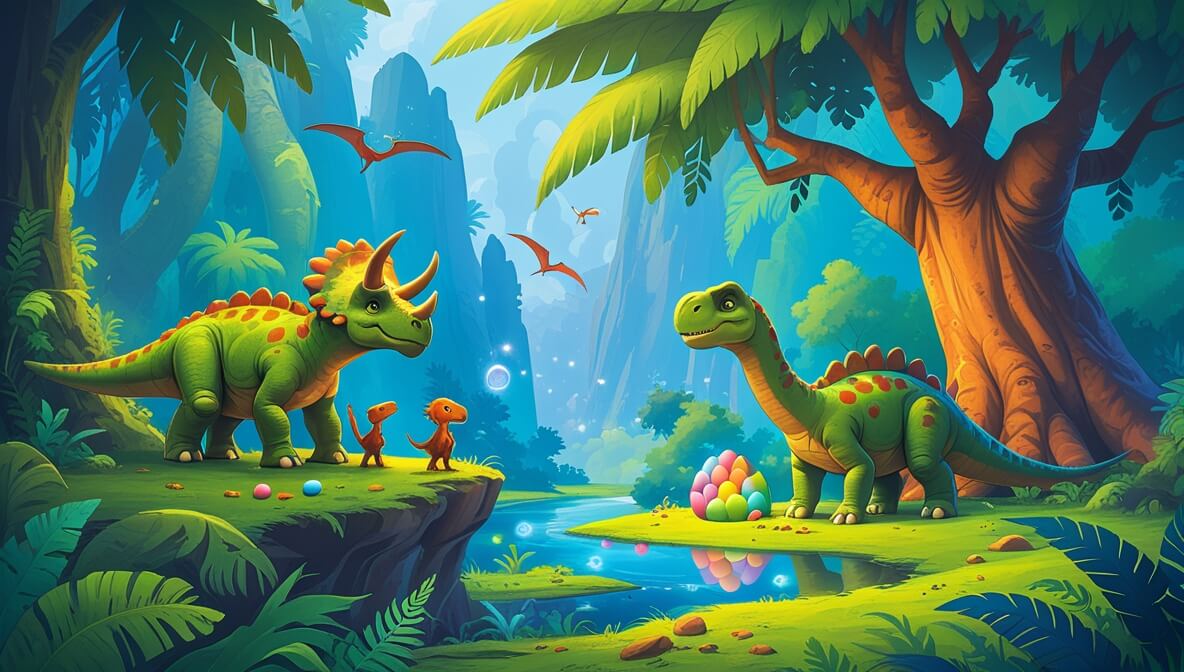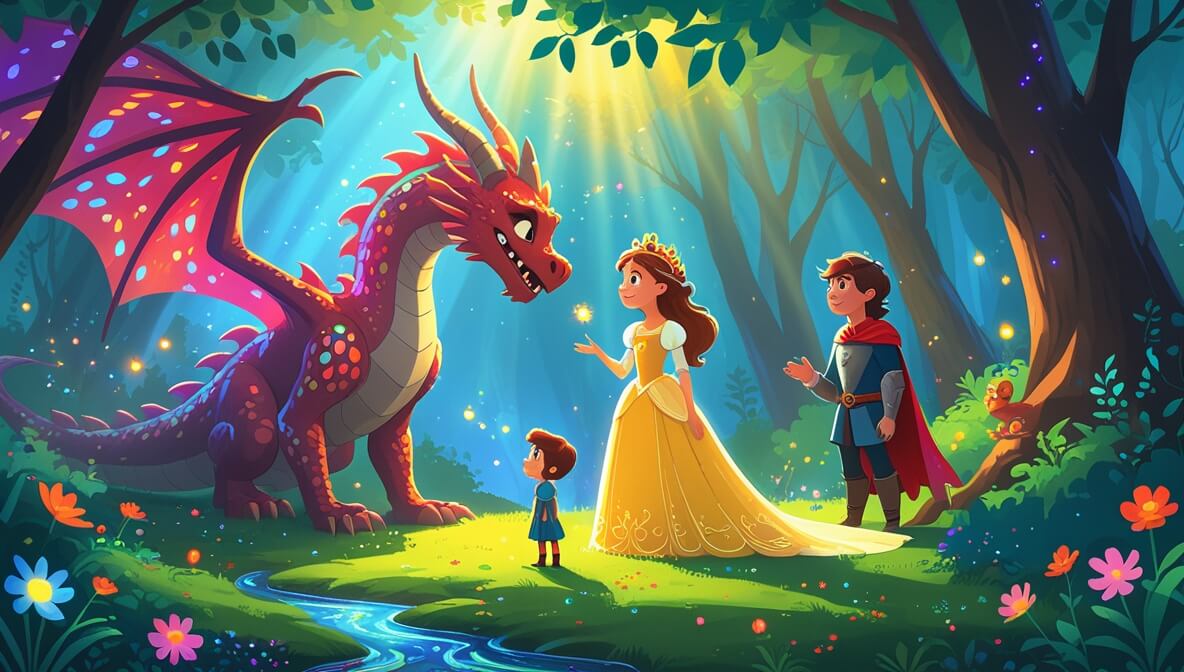A magical night begins as Luna the bunny and her friend Stardust the owl embark on an enchanting journey to find the missing moonbeam, with the help of twinkling stars.
Age Recommendation
0 – 4 years
Characters
Characters:
- Luna (a curious and brave little bunny)
- Stardust (a wise and gentle owl)
- Twinkle (a friendly star who loves to giggle)
Story
Once upon a time, in a cozy forest, there lived a little bunny named Luna. She had a special friend, an owl named Stardust, who always had wonderful stories to share. One night, as the moon shone brightly, Luna noticed a missing moonbeam. “Where did it go?” she wondered.
The missing moonbeam
Determined to find it, Luna hopped over to Stardust, who perched on an old oak tree. “I saw a moonbeam sparkle away!” Luna exclaimed. Stardust nodded wisely and spread his wings. “We must find the moonbeam before the night ends,” he said.
A journey under the stars
Together, they set off beneath the twinkling sky. As they walked, they met a star named Twinkle, who loved to giggle and dance. “I’ll help you find the moonbeam!” Twinkle chimed, lighting their path with her bright glow.
The moonbeam’s secret hiding spot
The trio wandered through the forest, following the soft whisper of the wind. Finally, they reached a sparkling meadow where the moonbeam had hidden, dancing with the fireflies. “We found it!” Luna cheered, her heart full of joy.
The end.
Moral of the Story
Friendship and teamwork can illuminate even the darkest nights, guiding us to find what we seek.
Questions to Think About
- Why do you think Luna wanted to find the moonbeam?
- How did Stardust help Luna?
- What made Twinkle special in their adventure?
- Can you think of a time when you helped a friend?
- What would you do if you found a missing moonbeam?
Do You Know
- Owls have special feathers that help them fly quietly at night.
- Stars are actually huge balls of gas burning billions of miles away.
Word Explorer
- Moonbeam: A ray of light from the moon.
- Twinkling: Shining with a flickering or sparkling light.
- Meadow: A field of grass and wildflowers.
Emotions in the Story
- Curiosity: Luna felt this when she noticed the missing moonbeam.
- Excitement: Stardust felt this as they started the adventure.
- Joy: Luna felt this when they found the moonbeam.
Color Your Scene
Imagine the moment when Luna, Stardust, and Twinkle found the moonbeam in the meadow. Picture the bright, glowing moonbeam surrounded by dancing, sparkling fireflies. Use colors like silver for the moonbeam, yellow for the fireflies, and deep blue for the night sky.
Parents’ Corner
This story is a great way to talk to your child about:
- Teamwork: Discuss how Luna and Stardust worked together with Twinkle to find the moonbeam.
- Friendship: Talk about how important it is to have friends who help and support each other.
- Curiosity: Encourage your child to ask questions and explore the world around them.
- Problem-solving: Discuss how finding the moonbeam required thinking and working together.

